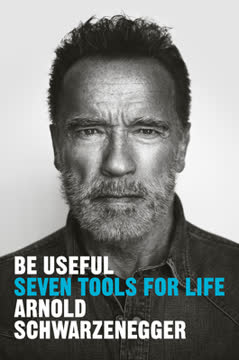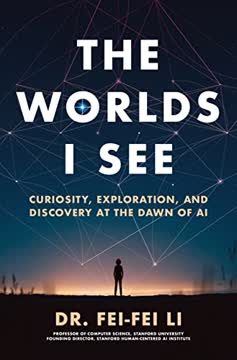Key Takeaways
1. TEAM FOCUS: A Comprehensive Framework for Effective Problem-Solving
"Experience and research suggest that there are typically three key areas where issues arise related to providing adequate assistance during a team problem-solving project."
TEAM FOCUS framework. This model, developed from McKinsey practices, provides a structured approach to team problem-solving. It consists of two main components:
-
TEAM (Interpersonal):
- Talk: Establish clear communication channels
- Evaluate: Assess team performance and adapt
- Assist: Leverage expertise and provide support
- Motivate: Identify and address individual motivators
-
FOCUS (Analytical):
- Frame: Define the key question and develop hypotheses
- Organize: Create process and content maps
- Collect: Gather relevant data efficiently
- Understand: Identify key insights and implications
- Synthesize: Develop and communicate recommendations
This framework aims to increase both effectiveness (doing the right thing) and efficiency (doing it well) in team problem-solving projects.
2. Talk: Communicate Constantly and Listen Attentively
"I react a certain way when you . . ."
Effective communication. The Talk element emphasizes the importance of clear and constant communication within a team. Key aspects include:
- Communicate constantly: Share information regarding personal background, project updates, new ideas, and client input.
- Listen attentively: Focus on the speaker, maintain eye contact, and demonstrate understanding.
- Separate issues from people: Present ideas objectively and discuss their merits without personal attachment.
To implement these principles, teams should:
- Document and share contact information for all team members
- Agree on a regular meeting schedule
- Use clear agendas and action plans for all meetings
- Utilize email for frequent updates in a consistent format
3. Evaluate: Set Expectations and Monitor Progress
"Trust, but verify."
Performance assessment. The Evaluate element focuses on setting clear expectations and monitoring progress throughout the project. Key aspects include:
- Discuss team dynamics: Have open conversations about working styles and preferences.
- Set expectations and monitor results: Jointly agree on tasks and deliverables, then track progress.
- Develop and reevaluate personal plans: Each team member should identify growth opportunities and share them with the team.
Implementation strategies:
- Identify personality types of team members (including clients)
- Hold a relaxed session at the project outset to discuss personalities and working preferences
- Establish procedures for handling disagreements and giving feedback
- Conduct regular feedback sessions to allow for improvement
4. Assist: Leverage Expertise and Provide Timely Feedback
"Ownership means that each person on a team, from the brand-new business analyst to the most senior partner on the engagement, knows the big picture of the project (its mission and objectives) and knows how he or she fits in."
Effective collaboration. The Assist element emphasizes leveraging team members' strengths and providing support. Key aspects include:
- Leverage expertise: Identify and utilize each team member's unique skills and knowledge.
- Keep teammates accountable: Ensure clear ownership of tasks and meet deadlines.
- Provide timely feedback: Offer constructive feedback during the project, not just at the end.
Implementation strategies:
- Conduct an initial brainstorming session to discuss the problem and key issues
- Balance workload equitably based on estimated hours required for tasks
- Provide daily updates on individual and team progress
- Include key status report meetings with the team and client
5. Motivate: Identify Unique Motivators and Celebrate Achievements
"Realize that everyone is different and is motivated by different things."
Team motivation. The Motivate element focuses on understanding and addressing individual motivators within the team. Key aspects include:
- Identify unique motivators: Understand what drives each team member.
- Positively reinforce teammates: Provide sincere compliments and recognition.
- Celebrate achievements: Organize team celebrations after project milestones and completion.
Implementation strategies:
- Use personality profiling tools (e.g., MBTI, DISC) to understand team members' preferences
- Identify primary and secondary motivators for each team member
- Give praise for and celebrate each major team milestone
- Organize a social gathering after project completion
6. Frame: Define the Key Question and Develop Hypotheses
"Framing is by far the most important step of the engagement process, in my mind—if this is done right from the outset, the rest of the engagement is usually smooth sailing."
Problem definition. The Frame element is crucial for setting the direction of the project. Key aspects include:
- Identify the key question: Clearly articulate the core problem to be solved.
- Develop the issue tree: Create a structured breakdown of the problem components.
- Formulate hypotheses: Develop potential answers to the key question for testing.
Implementation strategies:
- Document the key question, scope, and high-level plan in an engagement letter
- Identify temporal, geographical, and functional areas for the project
- Develop a general hypothesis and supporting hypotheses
- Revisit and revise hypotheses as data are gathered
7. Organize: Create Process and Content Maps
"Essentially, the issue tree should summarize, 'What is going on?' whereas the decision tree asks, 'What can we do?'"
Project structure. The Organize element focuses on creating a clear plan for the project. Key aspects include:
- Develop a high-level process map: Outline what needs to be done, by whom, and when.
- Create a content map to test hypotheses: Determine analytical priorities and approach.
- Design the story line: Begin outlining the final presentation early in the project.
Implementation strategies:
- Maintain objectivity as hypotheses are tested
- Use frameworks as a starting point to identify issues for analysis
- Explicitly list the types of analysis and data the team will and will not pursue
- Revisit the list if hypotheses are modified
8. Collect: Design Ghost Charts and Conduct Meaningful Interviews
"Create a chart a day."
Data gathering. The Collect element focuses on efficient and effective data collection. Key aspects include:
- Design "ghost charts" to exhibit necessary data: Create draft slides with anticipated insights.
- Conduct meaningful interviews: Prepare thoroughly and document key takeaways.
- Gather relevant secondary data: Focus on information directly related to hypotheses.
Implementation strategies:
- Create ghost charts with titles stating anticipated insights
- Develop interview guides and document insights within 24 hours
- Use electronic databases and search tools efficiently
- Always cite data sources on charts
9. Understand: Identify "So Whats" and Consider Implications
"So what."
Insight generation. The Understand element focuses on deriving meaningful insights from collected data. Key aspects include:
- Identify the "so whats": Determine the relevance and impact of each insight.
- Think through implications for all constituents: Consider effects on the team, client, and implementation.
- Document key insights on all charts: Clearly state the main takeaway from each data visualization.
Implementation strategies:
- Ask "so what?" to sort through analysis and find what's important
- Estimate the impact of recommendations on client operations
- Ensure each chart has a clear and meaningful point
10. Synthesize: Obtain Client Buy-In and Tell a Compelling Story
"Could we reschedule today's meeting to Thursday at 11:00? This would be more convenient for Collins and Johnson, and would also permit Clifford to be present."
Effective communication. The Synthesize element focuses on developing and delivering a compelling argument. Key aspects include:
- Obtain input and ensure "buy-in" from the client: Engage the client throughout the process.
- Offer specific recommendations for improvement: Provide actionable, well-supported advice.
- Tell a good story: Structure the argument logically and present it effectively.
Implementation strategies:
- Use the situation-complication-resolution structure for presentations
- Share the story with the client and team ahead of time for input
- Keep the story simple and focused on the original problem
- Present recommendations first, followed by supporting findings and data
Last updated:
FAQ
What's "The McKinsey Engagement" about?
- Toolkit for Problem Solving: "The McKinsey Engagement" by Paul N. Friga is a comprehensive guide that provides a toolkit for more efficient and effective team problem solving, drawing on methodologies used by McKinsey & Company.
- Structured Approach: The book emphasizes a structured approach to consulting, akin to military precision, focusing on team dynamics and analytical processes.
- TEAM FOCUS Model: It introduces the TEAM FOCUS model, which is a framework for organizing and executing consulting projects effectively.
- Real-world Applications: The book includes case studies and real-world applications, making it a practical guide for consultants, executives, and students.
Why should I read "The McKinsey Engagement"?
- Improve Problem Solving: It offers strategies to enhance team problem-solving skills, which are crucial in both consulting and corporate environments.
- Learn from McKinsey: The book provides insights into the methodologies of one of the world's leading consulting firms, McKinsey & Company.
- Practical Tools: It includes practical tools and templates that can be directly applied to real-world projects.
- Broaden Perspectives: Readers can gain a broader perspective on strategic decision-making and team dynamics.
What is the TEAM FOCUS model in "The McKinsey Engagement"?
- Two Components: The TEAM FOCUS model consists of two main components: TEAM (Talk, Evaluate, Assist, Motivate) and FOCUS (Frame, Organize, Collect, Understand, Synthesize).
- Interpersonal and Analytical: TEAM focuses on interpersonal interactions, while FOCUS addresses the core analytical elements of project management.
- Structured Problem Solving: It provides a structured approach to problem-solving, ensuring that teams are both effective and efficient.
- Iterative Process: The model emphasizes an iterative process, allowing for continuous improvement and adaptation throughout a project.
How does "The McKinsey Engagement" suggest improving team communication?
- Constant Communication: The book stresses the importance of constant communication among team members to avoid misunderstandings and inefficiencies.
- Listening Skills: It highlights the need for attentive listening and encourages team members to let go of their own agendas during discussions.
- Separate Issues from People: The book advises separating issues from people to maintain team harmony and focus on problem-solving.
- Use of E-mail and Meetings: It suggests using e-mail for updates and scheduling regular meetings with clear agendas to ensure effective communication.
What are the key takeaways of "The McKinsey Engagement"?
- Structured Framework: The TEAM FOCUS model provides a structured framework for team problem-solving.
- Importance of Framing: Properly framing the problem is crucial for the success of any project.
- Client Engagement: Engaging the client throughout the process is essential for buy-in and successful implementation.
- Iterative Process: The book emphasizes the importance of an iterative process, allowing for flexibility and adaptation.
How does "The McKinsey Engagement" address the importance of framing a problem?
- Critical First Step: Framing is identified as the most important analytical element, as it sets the direction for the entire project.
- Key Question Identification: The book stresses the need to identify the key question that drives the project, ensuring it is specific and focused.
- Issue Trees and Hypotheses: It introduces the use of issue trees and hypotheses to organize and prioritize analysis.
- Iterative and Flexible: The framing process is iterative, allowing for adjustments as new data and insights are gathered.
What advice does "The McKinsey Engagement" offer for collecting data?
- Design Ghost Charts: The book suggests designing ghost charts to outline necessary data and insights early in the process.
- Conduct Meaningful Interviews: It emphasizes the importance of conducting strategic interviews to gather valuable insights and data.
- Focus on Relevance: Teams are advised to focus on gathering relevant data that directly supports the hypotheses and story line.
- Document Sources: The book highlights the importance of documenting data sources for credibility and traceability.
How does "The McKinsey Engagement" suggest synthesizing information?
- Tell a Good Story: The book emphasizes the importance of crafting a compelling story that begins with recommendations and is supported by data.
- Client Buy-in: It stresses the need for client input and buy-in throughout the process to ensure successful implementation.
- Pyramid Principle: The book advocates for using the pyramid principle to structure presentations, starting with the main point and supporting it with data.
- Iterative Development: The story should be developed iteratively, allowing for adjustments as new insights are gathered.
What are the best quotes from "The McKinsey Engagement" and what do they mean?
- "Realize that everyone is different and is motivated by different things." This quote highlights the importance of understanding individual motivators to effectively lead and motivate a team.
- "The best teams are the ones that handle feedback in a constructive and timely fashion." It underscores the value of timely and constructive feedback in fostering team growth and success.
- "Framing is by far the most important step of the engagement process." This emphasizes the critical role of properly framing a problem to guide the entire project effectively.
- "Tell a story—use a very brief situation and complication followed by the resolution." It advocates for clear and concise storytelling in presenting findings and recommendations.
How can "The McKinsey Engagement" be applied in business schools?
- Experiential Learning: The book's concepts can be integrated into experiential learning programs, such as field studies and case competitions.
- Case Interview Preparation: It provides a framework for preparing students for case interviews, simulating real-world consulting scenarios.
- Core Curriculum: The TEAM FOCUS model can be incorporated into the core curriculum to enhance students' teamwork, analysis, and presentation skills.
- Practical Tools: The book offers practical tools and templates that can be used in academic settings to teach strategic problem-solving.
How does "The McKinsey Engagement" suggest motivating team members?
- Identify Unique Motivators: The book advises identifying and discussing individual motivators to tailor motivation strategies effectively.
- Positive Reinforcement: It emphasizes the importance of providing positive reinforcement and celebrating achievements to boost morale.
- Ownership and Autonomy: Encouraging personal responsibility and providing autonomy can significantly enhance motivation.
- End Goals: Focusing on the end goals and potential impact of the project can serve as a strong motivator for team members.
What are the corporate applications of "The McKinsey Engagement"?
- Strategic Thinking: The book can be used to train executives in strategic thinking and objective analysis.
- Internal Consulting Teams: Internal consulting teams can adopt the TEAM FOCUS model for structured problem-solving.
- Consultant-Client Relationship: It provides insights into the consulting approach, improving the consultant-client relationship.
- Team Problem Solving: The concepts can be generalized to enhance team problem-solving and decision-making within corporations.
Review Summary
The McKinsey Engagement receives mixed reviews, with an average rating of 3.58 out of 5. Some readers find it a useful introduction to consulting concepts and problem-solving methodologies, particularly the TEAM FOCUS approach. Others criticize it for being too high-level and lacking depth. Positive reviews highlight its practical examples and applicability to business situations, while negative reviews argue it doesn't offer much beyond basic consulting frameworks. The book is often compared to its predecessors in the McKinsey trilogy, with varying opinions on its relative value.
Similar Books










Download PDF
Download EPUB
.epub digital book format is ideal for reading ebooks on phones, tablets, and e-readers.




